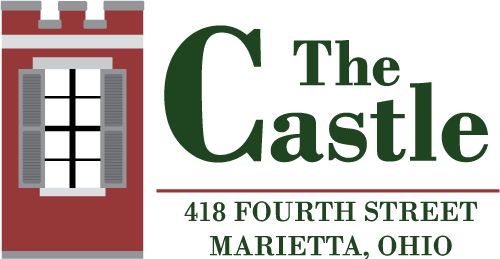– Provided by our Education Director Kyle Yoho (and unofficial in-house Chef)
It can’t get much more classically American than a good old fashioned biscuit. Biscuit recipes can be simple or complex. They can be accessible or closely guarded family secrets. Using a handful of ingredients you can bake a treat that goes with pretty much any meal or snack. This historical recipe for “baking powder biscuits” comes from Marietta’s Centennial Cookery Book (1887) provided by “Mrs. W.W. Mills.”

This recipe from “Mrs. W.W. Mills” aka Betsey Mills, namesake of the Betsey Mills club, highlights a traditional preparation for biscuits, which were a relatively new quick bread gaining popularity. New because baking powder had only become accessible to the public in the mid-1800s. As mentioned in our Lemon Pie recipe post, these older recipes are meant as guidelines, not to be followed strictly. Those reading this recipe at the time of the Centennial Cookery Book’s publication could embellish or adjust based on their own experience and good judgement. In experimenting with this recipe, I had to make some adjustments that I felt was critical to bringing this recipe to life, as noted below. However, their overall preparation was simple and the results were a tender, flaky biscuit with a nice flavor. Lastly, I’ll mention that trusty old-school lard is the fat used in this recipe, but butter can be substituted for a nice traditional flavor and sugar can also be added to the mix if so desired, see below for more details.
Click here to download the recipe!
Ingredients
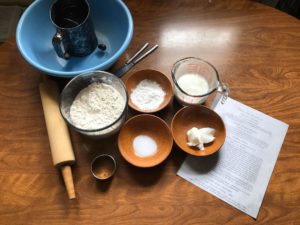 3 cups (483g) all-purpose flour
3 cups (483g) all-purpose flour
1 teaspoon (8g) salt
3 teaspoons (15g) baking powder
4 tablespoons (80g) lard*
1 1/3 cups (334ml) whole milk
*Betsey’s original recipe called for 2 tablespoons, but it didn’t quite come together until 4 were used. If wanting to substitute butter, use 6 tablespoons.
Note: If you want to make these more sweet than savory, add up to a tablespoon of sugar.
Instructions
Preheat your oven to 475˚F
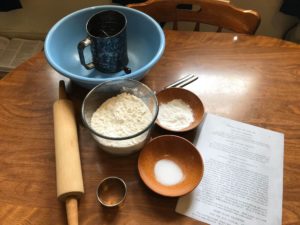
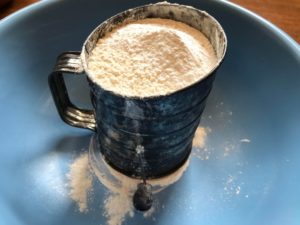
In a large bowl sift together flour, sugar, and salt. Using a pastry blender or two knives, cut in lard until mixture resembles course crumbs.
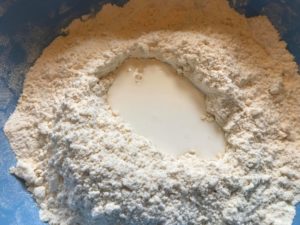
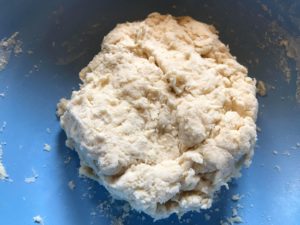
Drizzle in the milk a little at a time, mixing gently and quickly, until a shaggy dough comes together.
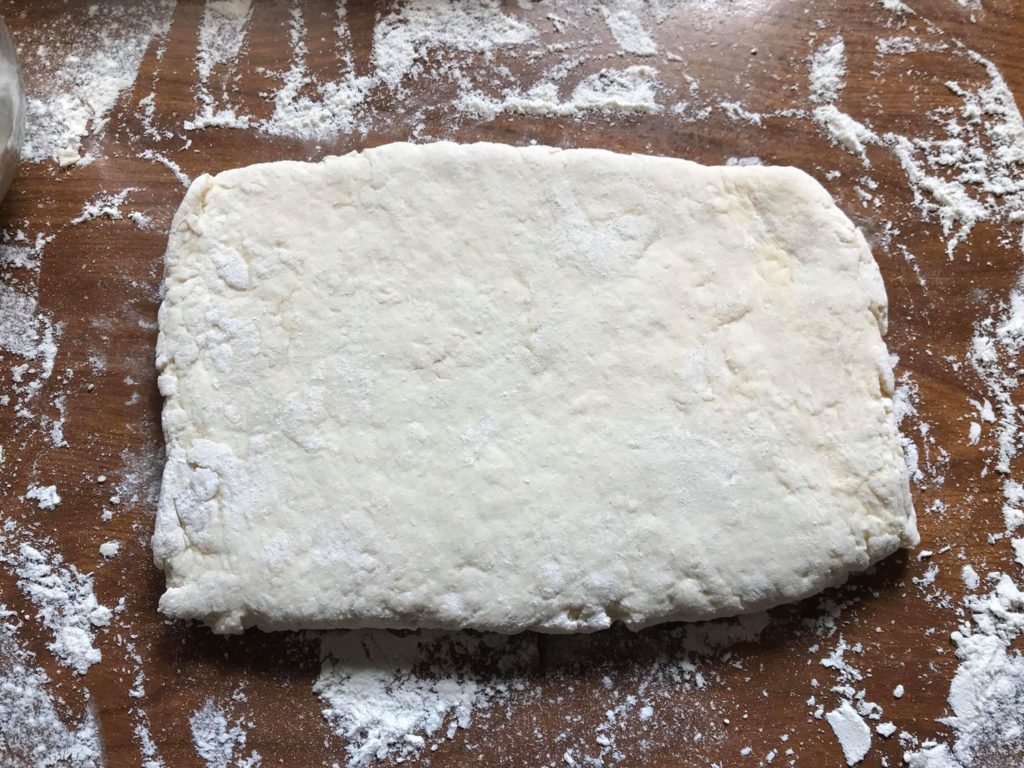
On a lightly floured surface, pat and roll out the dough, using a rolling pin, to ¾” thick.
(Optionally: Roll out dough to a rectangle, then fold in thirds like a letter and roll gently to ¾”.)
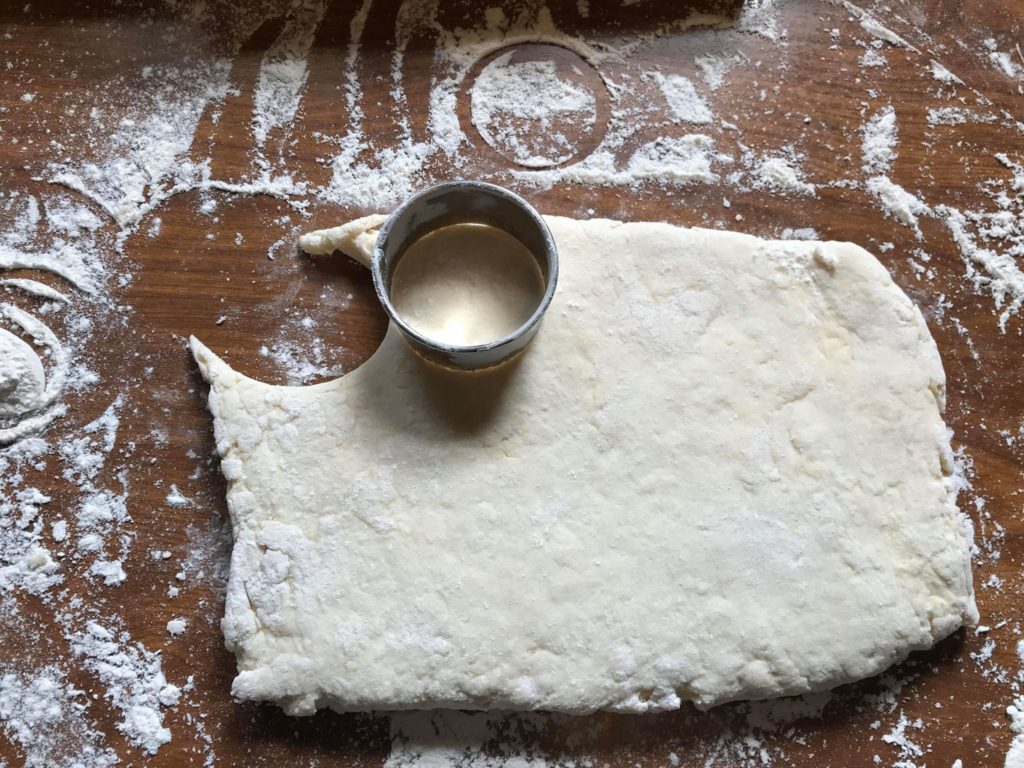
Cut dough into circles with a biscuit cutter.
(For a traditional size, use a 2 ½” cutter. Do not use a glass.)
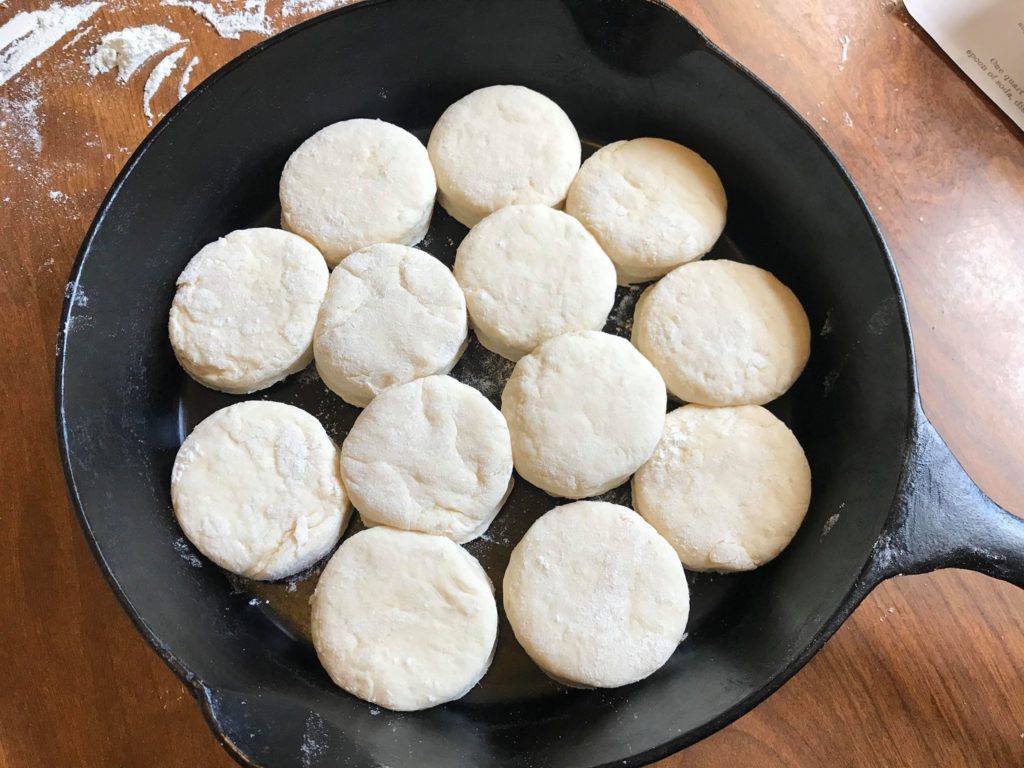
Place the biscuits touching each other, but not overcrowded on a prepared baking sheet, lined with parchment paper.
(Consider using an aluminum pan, or a cast iron skillet.)
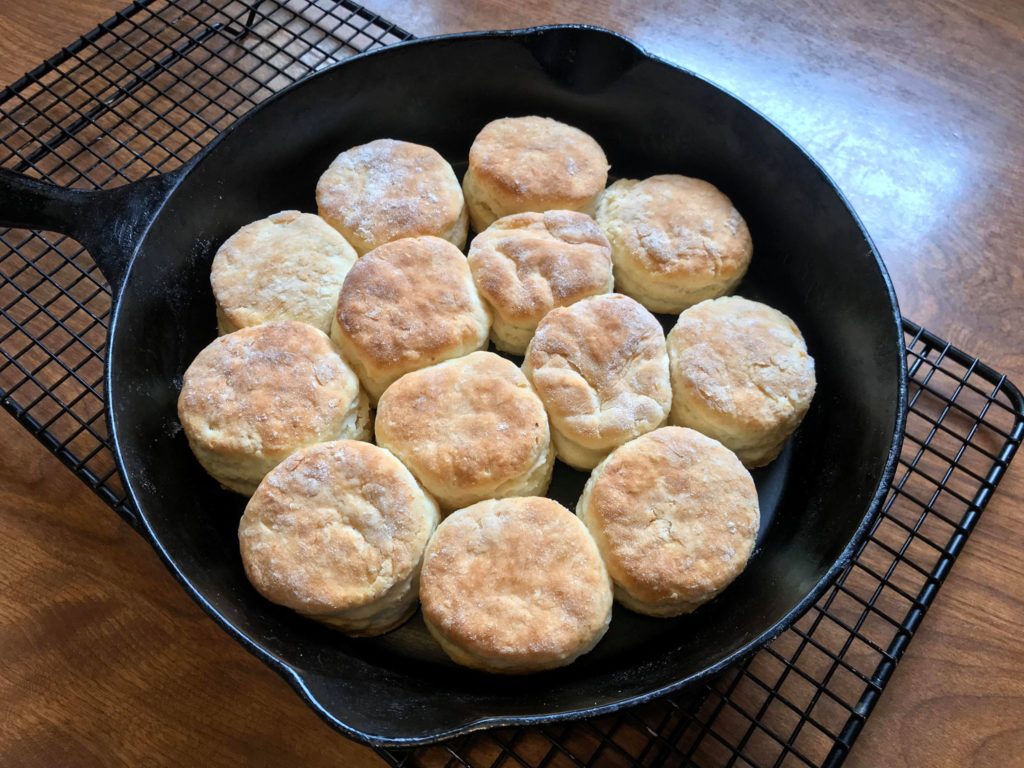
Bake for 18 – 20 minutes, or until golden brown. Remove from oven, cool on a wire rack, and serve warm
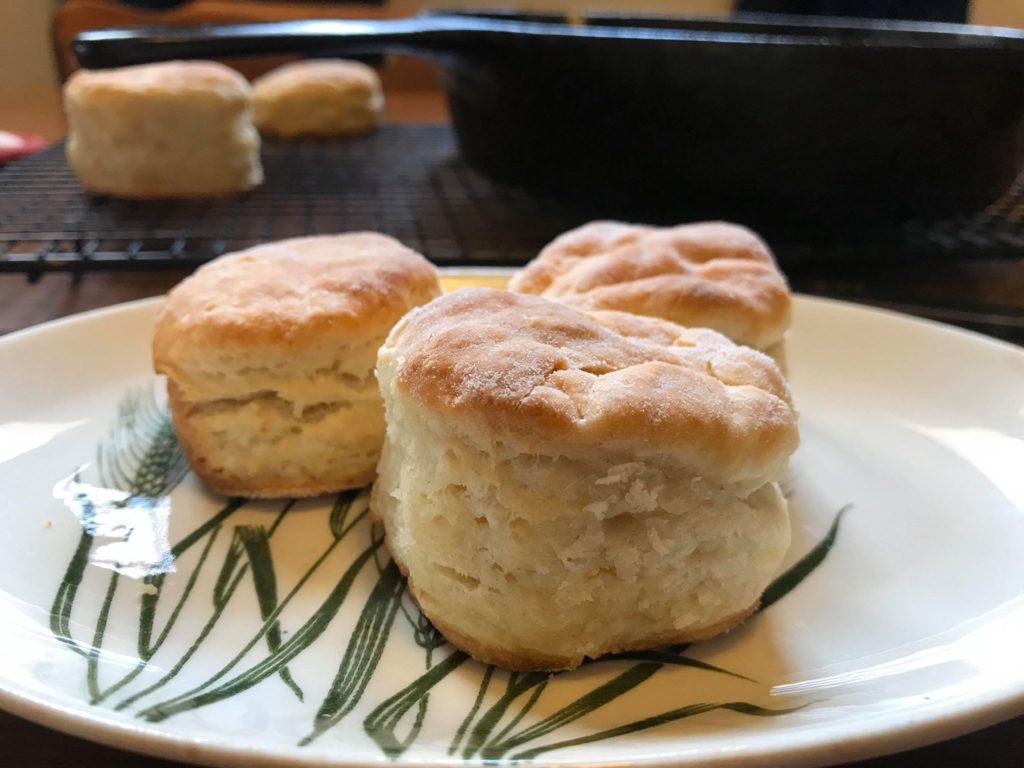 Enjoy!
Enjoy!
Details in the Dough
If you’re comparing the recipe by Mrs. Mills with the one provided, you’ll notice the original calls for “one quart” of flour, which is a bit confusing. When considering a quart as a fluid measure the conversion would be 4 cups, but as a dry measure flour at a quart comes to approximately 3 cups or 1.1lb. One of those confusing conversion issues… that you don’t usually think about until you’re converting a historical recipe, haha. Why Mrs. Mills suggests “2 tablespoonsful” of lard is a bit of a mystery. Using a tablespoon measure, it’s not enough and even justifying that her use of the term “tablespoonful” might mean a large spoon heaped full of lard, that’s still didn’t quite make a difference. I think this is where the intuition of the recipe readers came into play. This also gets to the point that sugar is omitted from this recipe, which the user can add, if so desired.
Today’s biscuit recipes primarily call for butter. As this recipe calls for lard, our modern tastes call for butter. As lard is 100% fat and butter is 80% fat, when butter is substituted for lard, you’ll always need more to balance fat content. It’s mentioned in the recipe, that it’s optional to fold the dough over on itself. Doing so will give you flakier biscuits. Please note, placing the biscuits next to each other is important to the biscuit baking process. Placing them side-by-side will allow them to rise tall rather than remain short and spread out. Again, the details are in the dough.
History behind the recipe…
A Town’s Cookbook

The Centennial Cookery Book is a reflection of Marietta in the late 1800s. It was compiled in 1887 by the Woman’s Centennial Association to raise funds for the upcoming anniversary events to occur in 1888. Only 1,000 prints were made to be sold at $1 apiece. Totaling 145 pages, it archived recipes spanning from the early pioneers of 1788 to modern times (that being 1888.) As the preface reads: “An effort has been made to preserve some of the methods of our grandmothers which have fallen into disuse, under change of circumstances, but which are remembered to have produced most excellent results for the palate. Few persons now care to prepare the pickled beef, ham and pork, the Rye and Indian Bread, the pounded Biscuit and Cracker, the Home brewed Beer of the early part of the century, but to those who remember these things they have never been surpassed for goodness…”
Recipes are linked to founding names like Putnam and Devol, Washington county mover and shakers, and includes recipes from Daphne Squires. Daphne was an African American servant of the Meigs and Woodbridge families who received acclaim as one of the best cooks in Marietta during her time. Many recipes have been brought down through generations and have New England roots. One example is the many oyster recipes collected. Some recipes were made from ingenuity, and others influenced by more recent European immigration, especially in regards to Germans. In addition to food recipes, remedies like beef tea and moss lemonade are in the “Sick Room” chapter. The “Miscellaneous” chapter contains oddities like “cement for making leather boots water proof,” instructions on how to preserve eggs for winter use, and tips for how to keep away flies.
Click here to view the Centennial Cookery Book
Who was “Mrs. W.W. Mills”?
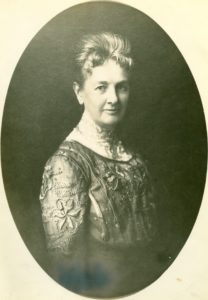
Image from Dawes Arboretum
At least locally, many are familiar with Betsey Mills. Most of us associate her as the namesake of the Betsey Mills Club. Today’s club grew out of a sewing class started in 1898 by Betsey Mills which transition into “The Girls Monday Club” in 1911, organized to benefit young women in the community. Betsey’s childhood home, a white frame house at the corner of Fourth and Putnam Streets where the club met, was donated in 1916 and became the foundation for the complex dedicated in 1927. Today the Club offers numerous programs and services to the community, including warm water pool therapy, yoga, day care, and secure dormitory housing for women.
Betsey was born in Marietta February 26, 1853 to Mr. and Mrs. Beman Gates. She married William Webster Mills October 12, 1875. The newlyweds departed for Crawfordsville, Indiana where they lived for twelve years. While there, Betsey taught Bible classes to students of Wabash College. Upon their return to Marietta in 1869, Betsey and William became members of the First Congregational Church where Betsey served as the president of the Home and Foreign Missionary Society. The couple moved into William’s boyhood home at the corner of Fifth and Putnam Streets, now the home of the Marietta College President. During their 27 years in the stately home, the couple were magnates of the community and college. One shining example of Betsey’s involvement with the college, was in 1893 when the school absorbed Elizabeth College, an educational institution for women. Its name was changed to the Marietta College for Women and an advisory board of nine women was formed to govern the institution, one of which was Betsey. This organization operated for five years until women were admitted to Marietta College. William and Betsey graciously opened their home on public occasions. One iconic example, is during President William Howard Taft’s visit to Marietta in 1910.

Image from Special Collections, MC
Her obituary describes her as “a woman of warm affections, open, loyal character and possessed of a gracious personality.” She issued at least nine contributions to the Centennial Cookery Book including salmon salad, corn fritters, molasses candy, graham muffins, and other sweet confections. Betsey passed away April 22, 1920 after a long bought of illness. Betsey’s legacy as a benefactor to her community lives on just shortly one hundred years after her death.
Thank you to Linda Showalter of Marietta Special Collections and Leslie Wagner of Dawes Arboretum for their assistance with research on the Mills family.

